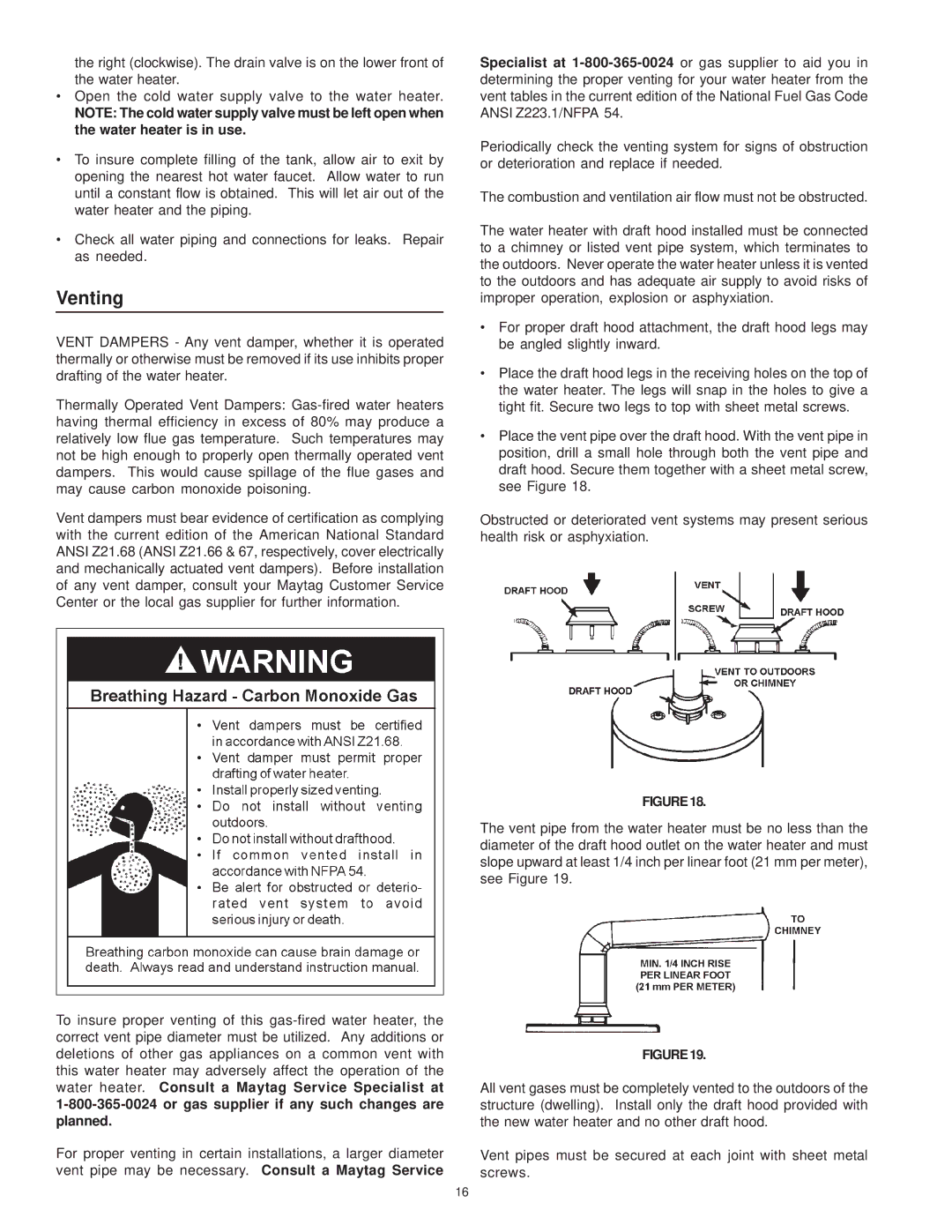
the right (clockwise). The drain valve is on the lower front of the water heater.
•Open the cold water supply valve to the water heater.
NOTE: The cold water supply valve must be left open when the water heater is in use.
•To insure complete filling of the tank, allow air to exit by opening the nearest hot water faucet. Allow water to run until a constant flow is obtained. This will let air out of the water heater and the piping.
•Check all water piping and connections for leaks. Repair as needed.
Venting
VENT DAMPERS - Any vent damper, whether it is operated thermally or otherwise must be removed if its use inhibits proper drafting of the water heater.
Thermally Operated Vent Dampers:
Vent dampers must bear evidence of certification as complying with the current edition of the American National Standard ANSI Z21.68 (ANSI Z21.66 & 67, respectively, cover electrically and mechanically actuated vent dampers). Before installation of any vent damper, consult your Maytag Customer Service Center or the local gas supplier for further information.
Specialist at
Periodically check the venting system for signs of obstruction or deterioration and replace if needed.
The combustion and ventilation air flow must not be obstructed.
The water heater with draft hood installed must be connected to a chimney or listed vent pipe system, which terminates to the outdoors. Never operate the water heater unless it is vented to the outdoors and has adequate air supply to avoid risks of improper operation, explosion or asphyxiation.
•For proper draft hood attachment, the draft hood legs may be angled slightly inward.
•Place the draft hood legs in the receiving holes on the top of the water heater. The legs will snap in the holes to give a tight fit. Secure two legs to top with sheet metal screws.
•Place the vent pipe over the draft hood. With the vent pipe in position, drill a small hole through both the vent pipe and draft hood. Secure them together with a sheet metal screw, see Figure 18.
Obstructed or deteriorated vent systems may present serious health risk or asphyxiation.
To insure proper venting of this
For proper venting in certain installations, a larger diameter vent pipe may be necessary. Consult a Maytag Service
FIGURE18.
The vent pipe from the water heater must be no less than the diameter of the draft hood outlet on the water heater and must slope upward at least 1/4 inch per linear foot (21 mm per meter), see Figure 19.
FIGURE19.
All vent gases must be completely vented to the outdoors of the structure (dwelling). Install only the draft hood provided with the new water heater and no other draft hood.
Vent pipes must be secured at each joint with sheet metal screws.
16
